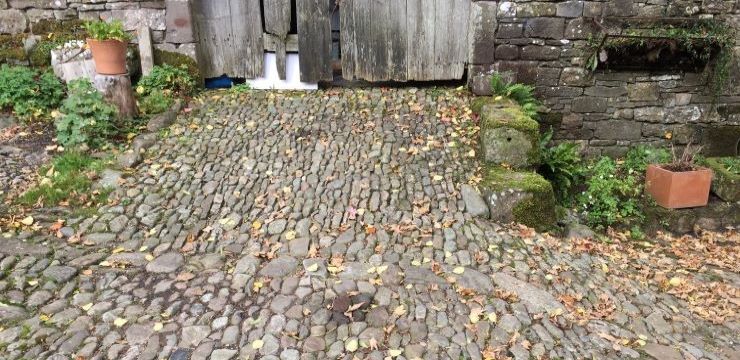
Are there special buildings, sites or features in your local area that you would like to see celebrated and shared on a Local Heritage List? You can help protect and celebrate a wide range of heritage features by nominating them for inclusion in the Lake District National Park's Local Heritage List.
The online form below enables you to pinpoint on a map the places you would like to nominate and upload supporting information including photos and descriptions. Eligible sites can include buildings and structures, or archaeological features, field boundaries, parks, gardens, historic street furniture, signs, fountains and more. Read the selection criteria below for further guidance on what kind of features you can nominate to be listed.
Sites which are already on the 'Listed Buildings' list or are Scheduled Ancient Monuments can not also be added to the local list. Please check if your site appears on the National Heritage List before you nominate it for the local list.
Your nomination will be considered by a panel made up of council and voluntary heritage group representatives from across Cumbria. If your site is successful it will be added to the Local Heritage List which will be available to search online.
Tell us about the local buildings and features that you would like on the local list
Use the web map below to explore which sites have been nominated and approved for inclusion in the Lake District National Park Authority's Local List.
If you have additional information about any of the nominated or approved sites, including historic or current photographs, please submit this using the online form above or email LocalList@lakedistrict.gov.uk.
If you consider a site to have been wrongly added to the Local List please email LocalList@lakedistrict.gov.uk setting out why the site fails to meet the selection criteria below. Where evidence is submitted which shows a site does not meet the selection criteria, the inclusion of the site on the list will be reconsidered by the review panel.
Cumbria is one of 22 areas to secure funding from the Department for Levelling Up, Housing and Communities for its Local Heritage Listing campaign.
This £1.5 million government campaign is designed to help protect the “commonplace or everyday” heritage assets that are valued by people locally but which do not have any existing protection in their own right under planning law.
The Cumbria Local Listing Project is a partnership between Copeland Borough Council, South Lakeland District Council, Eden District Council, Carlisle City Council, Allerdale Borough Council, the Lake District National Park Authority, and Cumbria County Council. It does not include Barrow Borough Council or the Yorkshire Dales National Park Authority.
Local listing aims to identify valuable aspects of our past that relate to the local area. It can include all types of heritage assets - buildings, monuments, structures, sites, areas or landscapes. Being on the Local List doesn’t protect buildings from demolition and doesn’t change what works require planning permission, but in some cases, things on the local list will be taken into consideration when new developments are planned.
Historic England has outlined some common selection criteria to decide if something is eligible to be included on a local list.
Although local heritage lists have long been developed successfully for buildings, all heritage asset types may be considered for inclusion.
The age of an asset may be an important criterion, and the age range can be adjusted to take into account distinctive local characteristics or building traditions.
The survival of the original form and material of any heritage asset will add value. Sometimes, however, older sites and features can survive largely hidden behind later remodelling.
A significant historical association either locally or nationally, including links to important local figures, may enhance the significance of a heritage asset. Blue Plaque and similar schemes may be relevant.
Social and communal interest may be regarded as a sub-set of historic interest, but has special value in local listing. It relates to places perceived as a source of local identity, distinctiveness, social interaction and coherence, things that contribute to the ‘collective memory’ of a place.
The asset may provide evidence about past human activity, which may be in the form of buried remains but may also be revealed in structure or landscape, for instance. Heritage assets with archaeological interest are primary sources of evidence about the substance and evolution of places, and of the people and cultures that made them.
Archaeological interest is the presence or potential presence of evidence of past human activity worthy of expert investigation.
The intrinsic design and aesthetic value of an asset relating to local or national styles, materials, construction and craft techniques, or any other distinctive characteristics.
Groupings of assets with a clear visual design or historic relationship.
An asset with strong communal or historical associations, or especially striking aesthetic value, may be singled out.